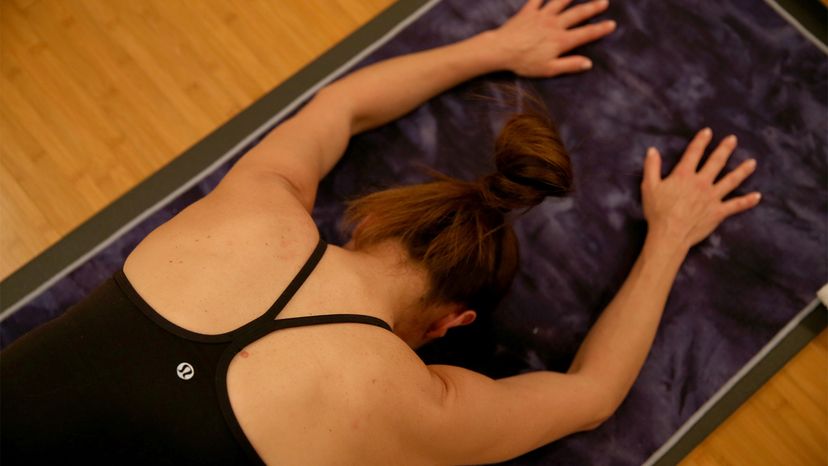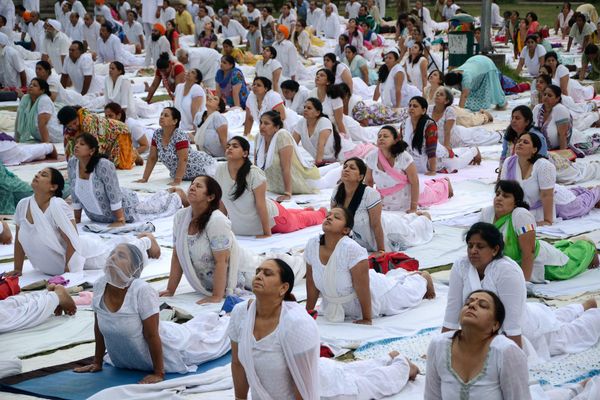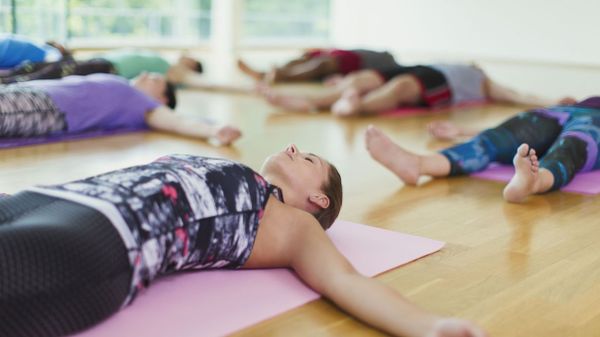One way MacDonald suggests warming things up is to step out of the traditional studio headspace and step outside instead. "If it's sunny, maybe skip the mat (but not your sunscreen) and get out in the grass for a grounding sequence warmed by the sun," she says. "There is science to support that simply connecting with nature, removing the barrier between your feet and the earth, creates a chemical and emotional shift upward in the body, mind and mood."
If going outside isn't an option, or the weather isn't cooperating with your yogic intentions, MacDonald has some other ideas too, calling upon the formal breath control practice of pranayama, which includes variations that are thought to warm the body and stoke internal heat. "Opt to stay indoors and instead of wishing for or relying on external heat sources, build your own fire from within by incorporating heat-building pranayama and intentional movement into your practice. Begin with some enlivening Kapalbhati or Bhastrika, make every transition and asana [pose] effortful and purposeful, and continue to grow the breath throughout as you move toward a melty savasana [corpse pose]."
San Francisco-based yoga teacher Gillian Confair has a slightly more offbeat, if not equally effective, idea for heating things up. "I mean, keep your bathroom door shut and take a massively hot shower," she says via text. "Then throw down your mat in the literal sauna of your bathroom, pray you don't put your foot in the toilet, and ask yourself why your yoga has to be hot."
While Confair is kidding about the bathroom yoga idea (maybe?), she raises a valid point for anyone obsessively trying to recreate the sweatiness of a hot studio practice at home. "The world is on airport rules right now," she says. "We're all wearing sweatpants, obsessed with "Tiger King," and eating 12 meals a day. If there's ever a time to shake up your routine, it's now. I promise you, there's more than one path to a calmer mind, and sticking to a rigid idea of 'this is what works' will likely lead to tears and frustration."
MacDonald agrees that this unexpected global crisis may actually be an opportunity for yogis to do the challenging internal work of the practice instead of focusing solely on the external asanas [poses]. "Hot yoga lovers often seek intensity and a faster pace, which can be great," she says. "However, I think this COVID-19 shift is forcing us all to slow down and change things up, and it's giving many of us time to work with. Now is the time to slow down and to explore other aspects of the practice that are heat building and detoxifying. Without the hot room, it's up to us to do all the work. I think maybe up until now, it was easier to feel like we didn't have time or the desire to dive deep and do 100 percent of the work ourselves, but I challenge people to see what they can do without the hot rooms to help. I bet people will be surprised by how strong and capable they are in a stripped down session at home with just a little curiosity and playfulness sprinkled on their mats."


